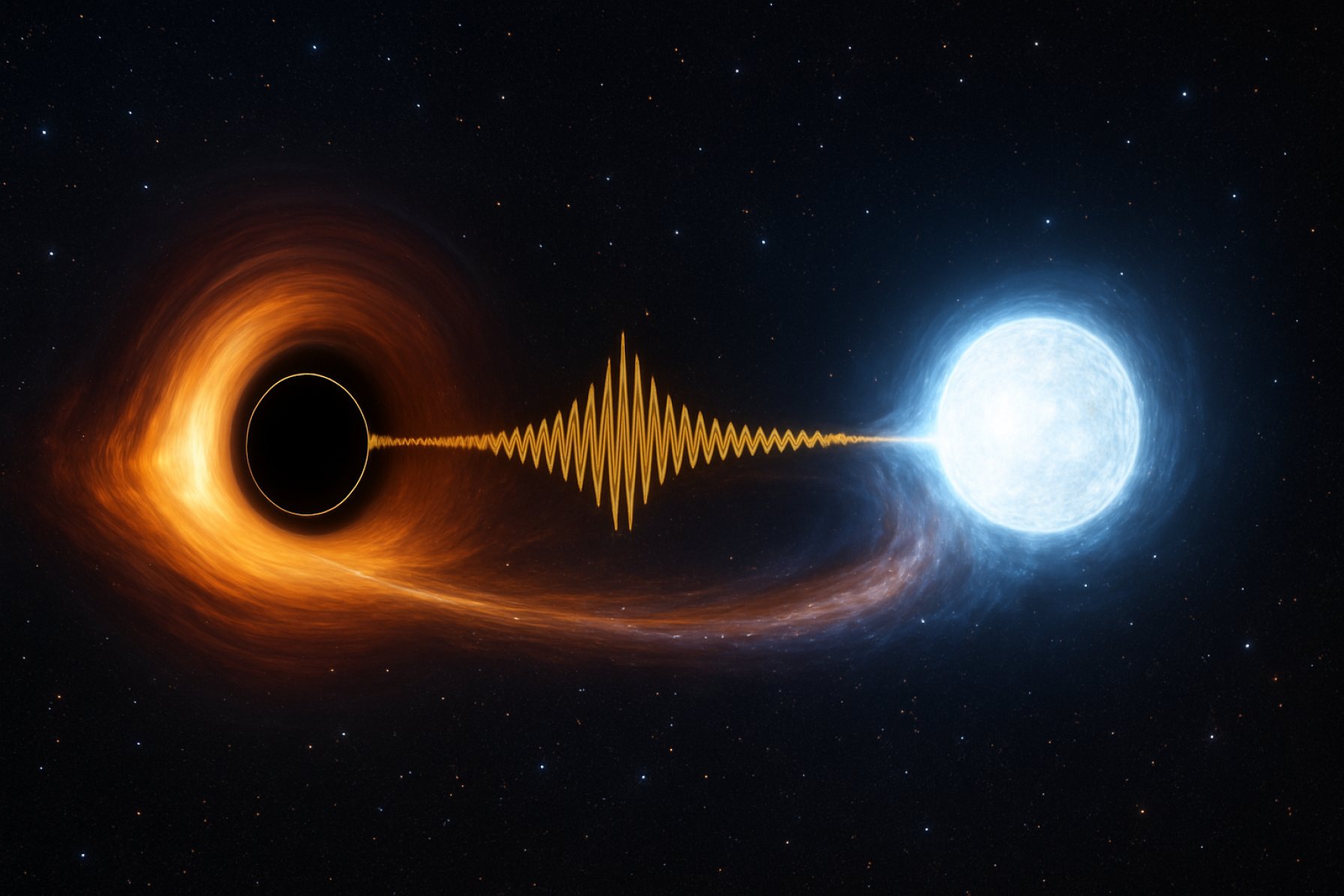Scientists Simulate Cosmic Destruction: Black Holes Tearing Stars Apart Could Blast Out Mysterious Radio ‘Screams’
Astronomers unlock a new chapter in cosmic violence: computer models reveal how black holes rip neutron stars, emitting detectable signals.
- 2,000 — Number of radio dishes in Caltech’s upcoming network hunting for cosmic signals.
- Millisecond — Time it takes for a neutron star to be shredded by a black hole.
- Perlmutter — The supercomputer powering these groundbreaking space simulations.
- 2 — Papers published in The Astrophysical Journal Letters detailing these findings.
Imagine a star — so dense a teaspoon would weigh a billion tons — cracking apart in the grip of a black hole. Thanks to cutting-edge supercomputer simulations spearheaded by Dr. Elias Most and his astrophysics team at Caltech, scientists have captured a vivid, millisecond-by-millisecond replay of a neutron star’s last moments before disappearing into cosmic oblivion.
The results are astonishing — not only visually, but sonically. When a black hole devours a neutron star, the ensuing chaos may actually generate a ‘sound’: a dramatic eruption of radio waves that Earth’s growing network of telescopes might soon be able to detect. This could rewrite how astronomers hunt cosmic collisions and decode the universe’s most dramatic deaths.
Q: What Actually Happens When a Black Hole Swallows a Neutron Star?
The simulation reveals a sequence of cosmic destruction. As the two titans dance closer, the black hole’s gravity stretches the neutron star into a cosmic taffy. In the final milliseconds, the neutron star’s surface violently cracks, much like a colossal spacequake.
On the brink of annihilation, shockwaves rip outward — far more powerful than anything seen before. As the neutron star’s crust shatters, its magnetic field twists and surges, generating waves called Alfvén waves. Just as the star vanishes, these surging fields unleash a fast radio burst (FRB) — an energetic radio ‘scream’ that astronomers hope to catch with next-generation observatories.
How Can We Detect This Stellar Cannibalism?
Spotting these cosmic catastrophes isn’t easy. Most of the action happens hundreds of millions of light-years away, and in mere fractions of a second. But Caltech is readying a game-changer: a vast new network of 2,000 radio dishes in Nevada, which may be sensitive enough to catch the split-second finale of these black hole-neutron star collisions.
Astronomers will listen for two unique signals: an initial crack-and-blast as the neutron star’s crust gives way, followed by a monstrous shockwave as the black hole swallows the star whole. Catching both could confirm this simulation’s wild predictions.
Q: What Is a Black Hole Pulsar—and Why Should We Care?
Here’s where things get stranger. The model predicts that during the merger, a brief, bizarre object might form: a “black hole pulsar.” Normally, pulsars are rotating neutron stars shooting out beams of energy like cosmic lighthouses. But for a fleeting instant, the gobbling black hole could mimic this, firing off intense beams of X-rays or gamma rays as it devours the neutron star’s magnetic field.
If confirmed, this would open a new window into how matter and energy behave at the edge of known physics—and could help unravel the mysteries of NASA’s most enigmatic objects.
How Did Scientists Pull Off This Cosmic Simulation?
This breakthrough was powered by Perlmutter — a supercomputer at Lawrence Berkeley National Laboratory with enough muscle to handle the mind-bending calculations. By leveraging high-powered GPUs, the team recreated every critical detail: from magnetic lashings to the final, luminous outbursts.
Their work, reported in two papers in The Astrophysical Journal Letters, marks the most detailed model yet of these violent cosmic unions.
Q: What’s Next for Cosmic Signal Hunting?
With new telescopes poised to scan the skies, astronomers hope 2025 will be the year we catch these violent events in real-time. As observatories fine-tune their listening gear, the hunt is on for the universe’s most fleeting yet powerful signals: proof that black holes don’t just swallow stars — they announce their cosmic meals with a bang.
Don’t miss humanity’s next leap into the cosmic unknown—follow the universe’s secrets as they unfold!
- Stay tuned to Caltech for simulation breakthroughs.
- Bookmark NASA for live updates on gravitational wave discoveries.
- Watch for results from new radio telescope arrays in Nevada.
- Check science news on Phys.org and Scientific American for the latest findings.
Checklist for Cosmic Event Watchers in 2025:
- Know the signals: Fast radio bursts (FRBs), monster shockwaves.
- Track Caltech’s radio array projects for real-time discoveries.
- Follow astrophysics journals for breakthrough papers.
- Stay updated on supercomputer simulation results.
Keep your eyes — and ears — on the universe. Spectacular cosmic collisions may soon speak to us in ways we’ve never imagined.








